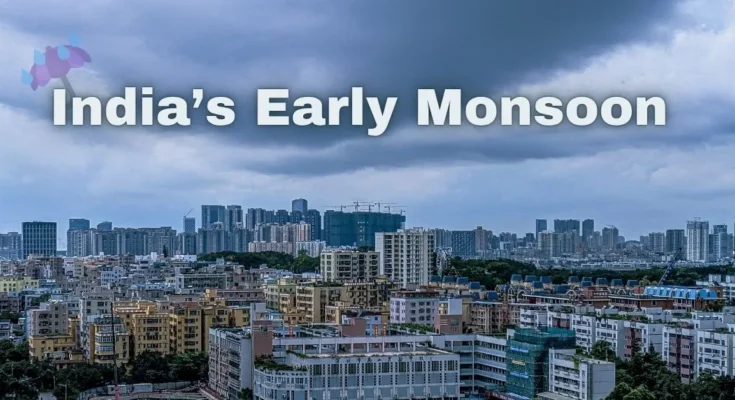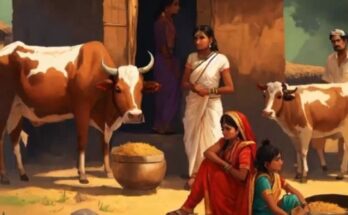🌧️ 1. Monsoon Coverage Ahead of Schedule
According to the India Meteorological Department (IMD), the monsoon is now expected to cover the entire country within the next 3–4 days, about a week earlier than usual. . After an initial 31% deficit in early June, rainfall has rebounded to a 9% surplus across India.
🌾 2. Earlier Sowing & Stronger Crops
Early monsoon rains mean farmers can begin sowing rice, cotton, soybean, sugarcane, corn, and pulses ahead of time. This supports better crop yields and can lead to a bumper kharif harvest, improving food supply and rural incomes.
🌡️ 3. Heatwave Relief & Lower Power Demand
With early rains bringing down temperatures, India saw declines in energy usage, especially in cooling demand. That meant savings on electricity bills and easing pressure on power infrastructure during peak summer.
💧 4. Reservoir & Groundwater Replenishment
Heavy rains have helped water storage in dams and aquifers, supporting drinking water and irrigation needs. Imported water dependency reduces as groundwater gets restored naturally.
🧱 5. Urban Disruptions from Early Downpours
Despite the benefits, premature heavy rains led to urban flooding, traffic disruptions, and damage to infrastructure — particularly in Maharashtra, where the monsoon arrived 10 days early, causing road collapses.
🌻 6. Crop Concerns in Rainfall-Deficit States
States like Andhra Pradesh face a 35% rainfall deficit in June after an excessively wet May, affecting crop sowing timelines. Districts like Guntur and Kadapa are reporting poor cultivation conditions despite the overall early monsoon.
📅 7. What Happens Next?
- Monsoon rains temporarily slowed in early June but recovered strongly by mid-June, with projections showing further strengthening.
- The IMD predicts above-average rainfall (106%) for the second straight year, promising stable agricultural output and economic growth.
🧠 Why This Matters to You
📈 Farmers
- Can start sowing early and improve yield potential
- Must monitor uneven rainfall patterns (some regions are lagging)
🏙️ Urban Residents
- Benefit from cooler climate but face risks like flooding and traffic disruption
🏦 Economy & Consumers
- Early harvests help stabilize food prices, raising rural incomes and boosting retail demand
- Lower inflation supports interest rate cuts, benefiting borrowers




